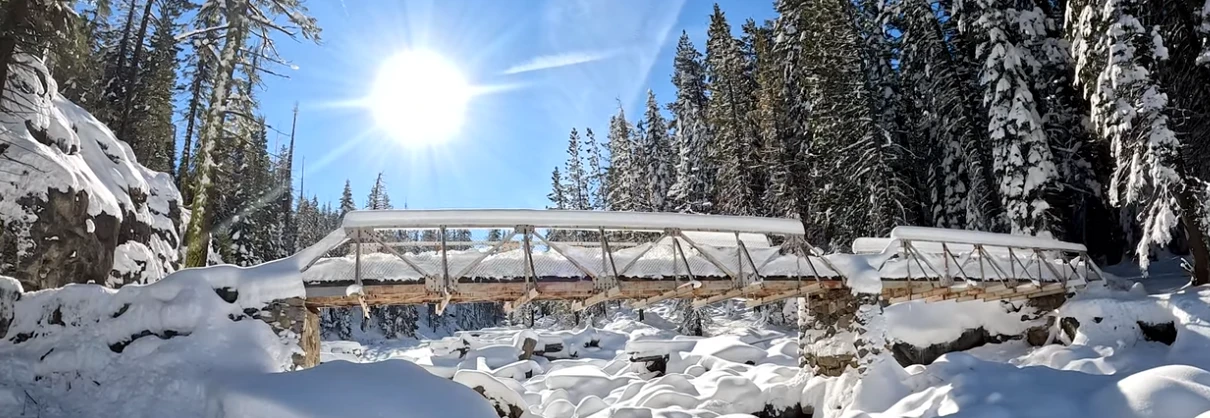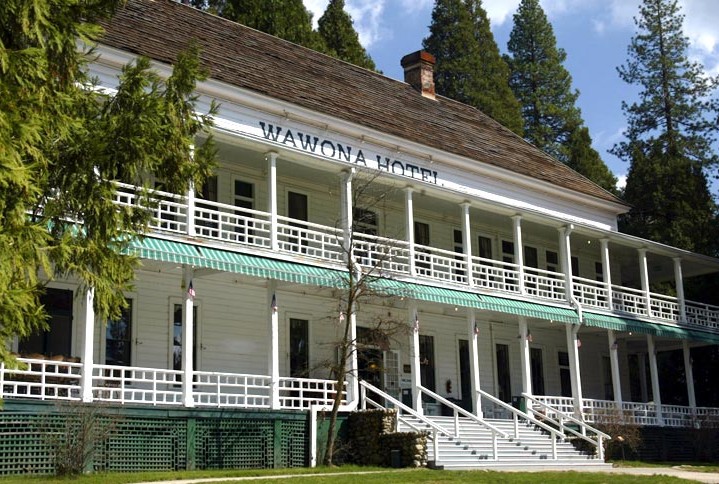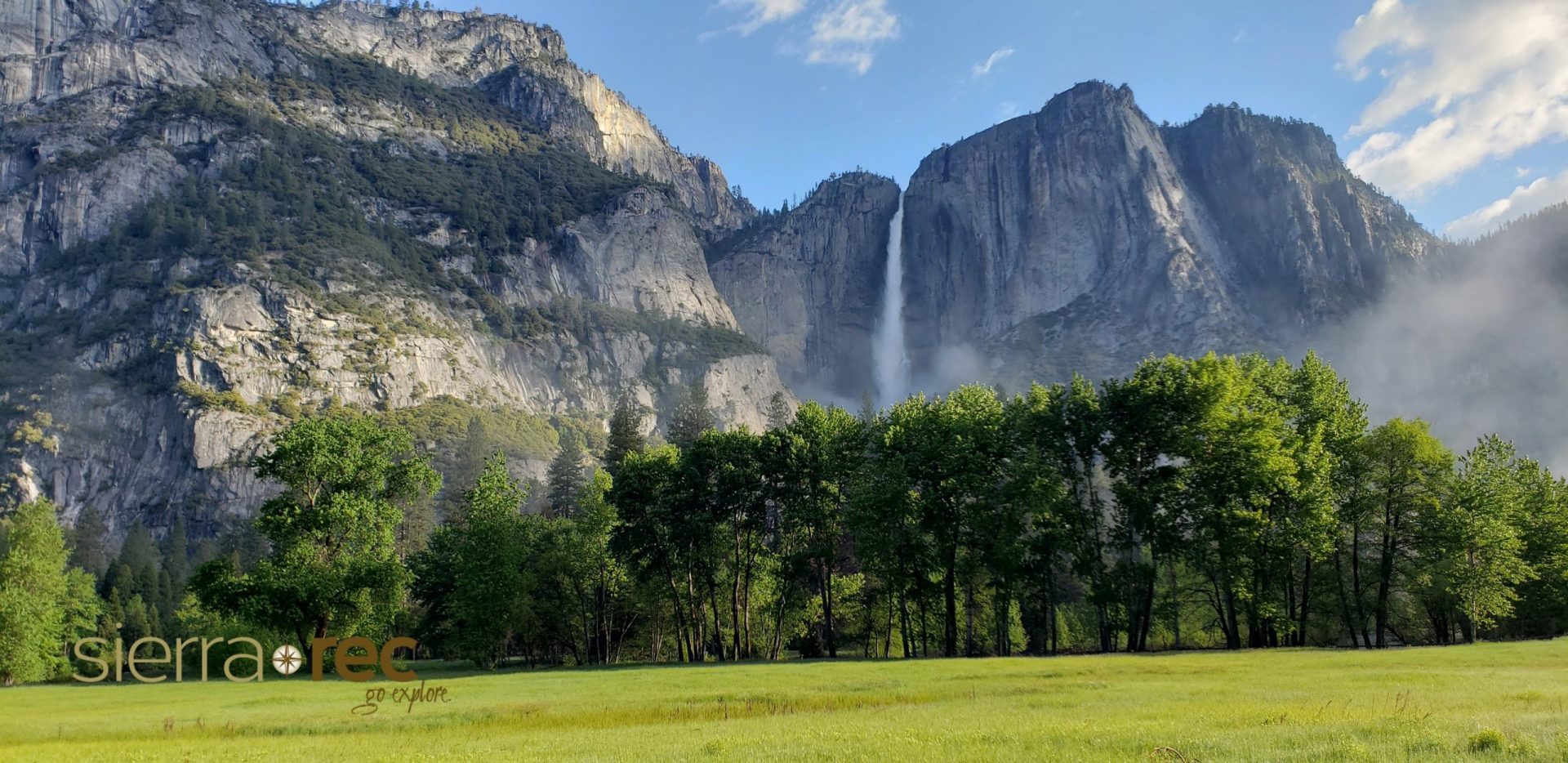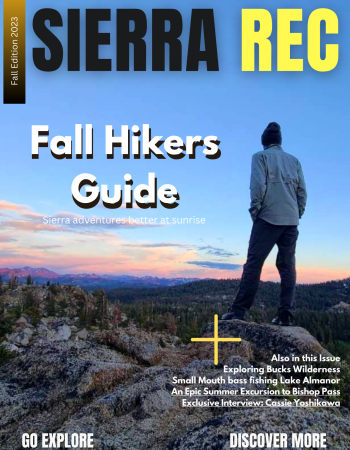Yosemite Valley is renowned globally for its stunning landscapes, towering granite cliffs, and cascading waterfalls. But, have you ever wondered what makes Yosemite Valley a must-visit destination in the winter? This article will unravel the unique allure of this extraordinary location during the winter season.
In winter, the Yosemite Valley transforms into a tranquil beauty, with its iconic landmarks covered in a blanket of snow. It offers an array of unique winter activities that promise a delightful and memorable experience. From wildlife spotting in the winter months to exploring magical winter hiking trails, Yosemite has it all.
But it doesn’t stop there. Yosemite Valley in winter provides spectacular photography opportunities, with snow-capped mountains and frozen waterfalls creating mesmerizing landscapes. And, when it comes to accommodations, you can experience the cozy comfort of Yosemite in winter.
The valley also offers fewer crowds in the winter, offering you a more peaceful experience. Let’s dive in and explore all the ways you can make the most of this hidden winter gem!

The Tranquil Beauty: Snow-Covered Yosemite
Yosemite Valley, renowned for its majestic beauty, transforms into a tranquil winter wonderland as the snow settles in. The ethereal beauty of snow-covered Yosemite is unlike anything you’ve ever seen. Add to that the crisp air, the silence broken only by the crunching of fresh snow underfoot or the distant call of wildlife, and you’ve got yourself a serene winter paradise.
Snow Blanketed Landscapes
The breathtaking beauty of Yosemite in winter is hard to put into words. Here’s a glimpse into what you can expect:
– El Capitan and Half Dome: These iconic granite formations take on a new level of majesty when they’re covered with a dusting of snow. The contrast between their stark, towering presence and the delicate, white snow is something to behold.
– Mariposa Grove: This grove of Giant Sequoias becomes even more magical in the winter months. The snow-covered ground contrasts beautifully with the reddish-brown bark of these ancient trees, creating a serene, picturesque setting.
– Yosemite Falls: The falls, one of the highest in the world, freeze partially in the winter creating a stunning ice cone at the base. This is a breathtaking sight that you do not want to miss.
Serenity and Silence
One of the most remarkable aspects of a snow-covered Yosemite is the tranquility it offers. The usual hustle and bustle of the park subsides during winter, replaced by a peaceful silence that allows you to connect with nature on a deeper level.
– Snowy Meadows: The meadows, blanketed in pristine white snow, offer a serene landscape where you can take a leisurely walk or just sit back and soak in the stillness.
– Silent Forests: Walking through Yosemite’s forests in winter is akin to stepping into a hushed, snow-laden world. The usual sounds of bird calls and rustling leaves are replaced by the sound of your own breath and the crunch of snow underfoot.
– Starlit Skies: With clearer skies and fewer visitors, winter nights in Yosemite are perfect for stargazing. The tranquil beauty of a starlit sky adds to the overall serenity of a winter visit.
The tranquil beauty of a snow-covered Yosemite Valley is a spectacle to experience. It offers a unique, serene winter landscape that provides a refreshing respite from the noise and speed of everyday life. The tranquility of Yosemite in winter is a truly rejuvenating experience and a must-see for anyone seeking a peaceful winter getaway.

Unique Winter Activities in Yosemite
Yosemite National Park is a year-round destination, but it truly becomes a winter wonderland during the colder months. While the park’s natural beauty is undeniable, the unique winter activities available in Yosemite set it apart from other holiday destinations.
- Ice Skating: A tradition since the 1930s, the Curry Village Ice Rink offers a unique winter experience. Nestled in the heart of Yosemite Valley and surrounded by breathtaking views of Half Dome and Glacier Point, ice skating in Yosemite is a memory you won’t soon forget.
- Snowshoeing: Yosemite offers ranger-led snowshoe walks for beginners. This is a wonderful way to explore the majestic beauty of the snow-covered landscape. If you’re more experienced, there are plenty of trails to venture on your own.
- Cross-Country Skiing: With over 90 miles of marked trails and 25 miles of machine-groomed tracks, Yosemite is a cross-country skier’s paradise. The Mariposa Grove of Giant Sequoias and Glacier Point Road are popular choices for this serene and invigorating activity.
- Downhill Skiing and Snowboarding: Yosemite’s Badger Pass Ski Area is a hidden gem, offering affordable skiing and snowboarding options. With 10 runs and 5 lifts, it’s perfect for families and beginners. Plus, the ski school offers lessons for all ages.
- Snow Tubing: An exciting activity for the whole family, snow tubing at the Badger Pass Ski Area is a must-do. It’s a fun and exhilarating way to slide down the snow-covered slopes.
- Winter Wildlife Viewing: Winter brings out a different set of wildlife in Yosemite. Look for tracks in the snow, or join a ranger-led program to learn more about the animals that thrive in the winter months.
From ice skating under the shadow of the famous Half Dome to cross-country skiing through stunning trails, winter in Yosemite offers activities that are both exhilarating and tranquil. Whether you’re an adventure enthusiast looking for a thrill or someone seeking a peaceful retreat in nature’s lap, Yosemite in winter has something for everyone.

Wildlife Spotting in the Winter Months
Yosemite Valley in winter offers a unique opportunity for wildlife enthusiasts. As the valley is cloaked in a blanket of snow, many of the park’s resident creatures adapt in fascinating ways, providing a rare spectacle for those brave enough to venture into the park during the colder months. Whether it’s a bobcat prowling through the snow or a bald eagle soaring above the frozen valley, wildlife spotting in Yosemite during winter is a compelling experience.
Here are some of the wildlife experiences you can look forward to when you visit Yosemite Valley in the winter:
– Mule Deer: These animals are common in the valley, and their dark bodies contrast beautifully against the white snow. While they’re usually shy, during winter they tend to be more visible as they search for food.
– Bald Eagles: Winter is a great time for birdwatching in Yosemite, and the bald eagle is one of the highlights. These majestic birds can often be spotted circling high above the valley.
– Coyotes: These elusive creatures are easier to spot against the white backdrop of winter. Look out for them around dawn and dusk when they’re most active.
– Bobcats: While they’re notoriously hard to spot, bobcats are active throughout the winter in Yosemite. If you’re lucky, you might catch a glimpse of one of these beautiful creatures stalking their prey in the snow.
– Birdlife: Aside from bald eagles, many other birds remain in Yosemite during the winter. These include the Steller’s jay, American dipper, and the great grey owl, among others.
Remember, as you explore the wonders of Yosemite in winter, it’s important to respect the wildlife. Keep a safe distance, don’t feed the animals, and leave no trace of your visit. This way, we can ensure that the majestic creatures of Yosemite Valley continue to thrive and enchant visitors for generations to come.

Magical Winter Hiking Trails
Yosemite Valley is renowned for its stunning hiking trails, and they become even more magical when covered in a blanket of pure, white snow. The winter season brings a unique beauty to the trails, transforming them into a paradise for hikers and nature lovers alike.
– Mist Trail: This trail is one of the most popular hikes in Yosemite during the summer, but in winter, it takes on a new charm. The trail may be shorter due to winter conditions, but the views of Vernal Fall covered in ice and snow are absolutely breathtaking.
– Mirror Lake Trail: An easy hike that’s perfect for families or those looking for a leisurely stroll. In winter, the lake often freezes over, creating a serene, mirror-like surface that beautifully reflects the surrounding snow-covered peaks.
– Yosemite Falls Trail: Although this trail can be challenging due to ice and snow, the view of the frozen Yosemite Falls, one of the world’s tallest waterfalls, is worth every step.
– Badger Pass to Dewey Point: This trail is specially groomed for winter use and offers stunning views of the Yosemite Valley and the High Sierra. It’s also a popular trail for cross-country skiing.
– Mariposa Grove: Home to over 500 mature giant sequoias, Mariposa Grove is a winter wonderland not to be missed. The snow adds a certain serenity to the grove, making it a peaceful destination for a winter hike.
While hiking these trails, you can enjoy the crisp winter air, the tranquil silence, and the soft crunch of snow under your boots. It’s a completely different experience compared to hiking in the summer months, and one that should not be missed.
Remember, though, that winter hiking can be challenging, and it’s essential to be prepared. Always check the trail conditions before you set off, wear layers to stay warm, and bring plenty of water and high-energy food. Don’t forget your camera, as the winter scenery in Yosemite is truly spectacular!
The magical winter hiking trails in Yosemite offer an unforgettable experience, making Yosemite Valley a must-visit destination in the winter.

Spectacular Winter Photography Opportunities
Winter in Yosemite Valley transforms the landscape into a heavenly sight, offering photographers a myriad of enchanting scenes to capture. The pristine beauty of the snow-covered valley and the serenity of the wilderness present a unique opportunity to create stunning winter-themed photographs. Whether you’re a professional photographer or a hobbyist, the mesmerizing beauty of Yosemite in winter will surely inspire you.
– Frozen Waterfalls: The sight of Yosemite’s iconic waterfalls, partially or fully frozen, is a spectacle to behold. The ice formations and frosty mist around the falls create an ethereal atmosphere that’s perfect for photography.
– Snow-Covered Landscapes: The park’s iconic landmarks such as Half Dome, El Capitan, and Cathedral Rocks adorned with a blanket of snow create postcard-worthy shots. The contrast between the stark white snow and the granite cliffs is truly striking.
– Frosty Morning Scenes: Early mornings in Yosemite can be magical, with frost covering the trees and the soft sunlight reflecting off the snow. This is a perfect time to capture the tranquil beauty of the park.
– Snowy Wildlife: The wildlife of Yosemite looks even more impressive against the snowy backdrop. Animals like deer, coyotes, and birds can be spotted in the winter, providing great subjects for wildlife photography.
– Night Sky Photography: With clear winter nights, Yosemite offers amazing opportunities for star photography. The dark, clear skies serve as a canvas for the bright stars, creating a mesmerizing view.
– Sunset and Sunrise: The sunrises and sunsets during winter can be truly breathtaking. The way the light interacts with the snow and ice creates an array of colors, providing excellent lighting conditions for photography.
While the colder temperatures and snow-covered landscapes may present some challenges, they also offer unique opportunities for winter photography. The key is to be prepared with the right equipment and to dress warmly. So pack your camera and gear, and get ready to capture the mesmerizing winter beauty of Yosemite Valley. From the grand landscapes to the minute details of frost on leaves, every frame you capture will be a testament to Yosemite’s winter wonder.

Cozy Accommodations: Experience Yosemite’s Winter Comfort
Yosemite Valley is not just about the breathtaking sights and thrilling activities; the accommodation options are an integral part of the experience. In winter, Yosemite Valley transforms into a cozy haven, offering comfortable and warm stays that complement the chilly outdoor adventures. Whether you prefer the luxury of a plush resort, the rustic charm of a cabin, or the unique experience of a heated tent, Yosemite has something for everyone.
– The Ahwahnee Hotel: This iconic hotel is a National Historic Landmark and offers luxury accommodation with stunning views of Yosemite’s landmarks like Half Dome, Glacier Point, and Yosemite Falls. The giant stone hearths and richly colored Native American artwork create a warm and cozy atmosphere, perfect for relaxing after a day in the snow.
– Yosemite Valley Lodge: Ideal for families and groups, this lodge is centrally located near the base of the spectacular Yosemite Falls. The glass and wood architecture works in harmony with the surrounding nature, and the warmth of the open fire in the lounge is a welcome respite from the winter chill.
– Curry Village: For a unique experience, consider staying in one of the heated tent cabins in Curry Village. These tents offer the perfect balance between a traditional camping experience and the comfort of a cabin, complete with insulated walls and a wood-burning stove for warmth.
– Wawona Hotel: If you prefer a quieter stay away from the hustle and bustle of the Valley, the historic Wawona Hotel is a great choice. Nestled amongst towering pine trees, this Victorian-era hotel offers a peaceful retreat with cozy rooms and a warm dining area.
– Rental Cabins: For those who prefer privacy, Yosemite also offers a variety of rental cabins. These can range from rustic and traditional to modern and luxurious, all equipped with the necessary amenities to keep you warm and comfortable throughout your stay.
These accommodations are more than just a place to rest; they are your warm refuge against the winter cold, your window to stunning snow-blanketed vistas, and your cozy nest where you can relax and rejuvenate. Winter in Yosemite is not just about braving the cold, it’s also about enjoying the comfort and warmth that these accommodations provide. After all, what could be more delightful than curling up by the fire after a day of exploring the snowy wonderland outside?
Embrace the Solitude: Fewer Crowds in the Winter
Yosemite Valley is a well-known and beloved destination, attracting millions of visitors each year. However, while the summer months often see the park bustling with tourists, winter presents a different scene entirely – one of tranquil solitude and serenity.
– Fewer Visitors: Winter in Yosemite means fewer crowds. The park’s trails, scenic views, and amenities are significantly less crowded than during the peak summer season. This provides an opportunity for visitors to truly immerse themselves in the natural beauty of the park without the distraction of large crowds.
– Quiet and Peace: The quiet of winter amplifies the natural sounds of the park – the rustle of leaves, the gurgle of a river, the chirping of birds. It’s a perfect time to meditate, reflect, and rejuvenate amidst nature.
– Unhindered Access to Attractions: With fewer people around, you’ll have better access to the park’s attractions. There are no long lines to endure and you can take your time to appreciate the stunning landscapes, waterfalls, and wildlife.
– Unique Experiences: The solitude of winter in Yosemite allows for unique experiences. Imagine having a picnic while surrounded by snow-covered trees, or watching the sunrise over a frosty landscape. These are experiences that can be difficult to enjoy during the busier months.
– Wildlife Encounters: Fewer people means more wildlife! Animals are more likely to venture out when the crowds have died down, giving you a chance to spot deer, coyotes, and a variety of bird species.
– Better Accommodation Options: With fewer tourists, there’s a better chance of scoring a room at one of Yosemite’s popular lodges or campsites. You might even snag a last-minute reservation!
In winter, Yosemite transforms from a busy tourist hotspot to a calm and peaceful retreat. It’s a chance to connect more deeply with nature, experience the park’s wonders without distractions, and truly embrace the solitude. So bundle up, pack your winter gear, and prepare to discover a different side of Yosemite Valley.
The Magic of Stargazing in Yosemite’s Winter Sky
Yosemite Valley is a wonderland by day, but once night falls during the winter months, it transforms into a celestial spectacle that is simply breathtaking. The clear, crisp winter air combined with the absence of light pollution makes Yosemite an ideal location for stargazing. Here, the Milky Way can be viewed in all its glory, and constellations appear as vivid tapestries against the night sky.
- Dazzling Constellations: On a clear winter night, you can witness the dazzling spectacle of constellations such as Orion, Gemini, and Taurus. These constellations, among others, are more prominent and visible in the winter sky.
- Meteor Showers: Winter is also a prime time for meteor showers. The Geminids in December and Quadrantids in January offer an enchanting display of shooting stars.
- The Milky Way: In Yosemite, the Milky Way is visible to the naked eye. This band of light is actually an arm of our own galaxy, revealing billions of distant stars.
- The Moon and Planets: The winter sky often gives a clear view of the moon’s craters and the bright planets. Jupiter, Mars, and Saturn often shine brightly in the winter sky, offering an unparalleled view for visitors.
Apart from the celestial sights, the experience of stargazing itself is magical in Yosemite’s winter. The silence of the snow-covered landscapes under the star-studded sky creates a serene and tranquil atmosphere. It’s an experience that invites reflection and wonder, making you feel connected to the vast universe above.
For the best stargazing experience, it is recommended to find a spot away from the lights of the Valley’s developed areas. Some of the popular locations include Glacier Point Road, which is closed to cars in winter but open to walkers and cross-country skiers, and Tioga Road, which offers dark, unobstructed views of the sky.
Experiencing the magic of stargazing in Yosemite’s winter sky is an unforgettable experience, one that adds to the allure of this must-visit winter destination. Whether you’re a seasoned astronomer or a casual stargazer, the winter night sky in Yosemite Valley will leave you awestruck.
Winter Safety and Preparation Tips for Yosemite Visitors
Visiting Yosemite Valley in winter is an extraordinary experience, but it does come with its own set of challenges. Remember, safety should be your top priority. Here are some key tips to ensure your winter trip to Yosemite is not only enjoyable but also safe and well-prepared.
Clothing and Gear: Dressing appropriately is vital when visiting Yosemite in winter.
– Layer your clothing: Start with moisture-wicking undergarments, add insulating layers, and finish with a waterproof outer layer.
– Wear waterproof and insulated boots: Keep your feet warm and dry to avoid frostbite.
– Don’t forget gloves, hats, and scarves: Protect your extremities from the cold.
– Carry a backpack: Fill it with essential items like water, snacks, first aid kit, a map, and a flashlight.
Driving: Yosemite’s roads can be treacherous in winter due to snow and ice.
– Check road conditions: Before you set off, make sure to check road conditions and closures on the National Park Service website or by calling their hotline.
– Use chains: Tire chains are often required on park roads, so make sure you have the correct size for your vehicle and know how to install them.
– Drive slowly: Always drive slower than you normally would, maintaining a safe distance from the car in front of you.
Hiking Safety: Winter hikes are mesmerizing, but they can also be dangerous without proper precautions.
– Stick to marked trails: It’s easy to get lost when trails are covered in snow. Use a map and don’t stray from marked paths.
– Check the weather forecast: Weather can change rapidly in Yosemite. Always check the forecast before heading out on a hike.
– Be aware of avalanche risks: Steep slopes with fresh snow can pose a serious risk of avalanches. Stick to lower risk areas unless you have the necessary training and equipment.
Wildlife: Respect Yosemite’s wildlife by maintaining a safe distance.
– Keep food secured: Bears and other animals are attracted to human food. Use bear-resistant food lockers available at the campgrounds.
– Be cautious of icy surfaces: Animals, like deer, may venture onto icy roads and parking lots in winter, posing a hazard to themselves and drivers.
A winter visit to Yosemite is a unique and rewarding experience. With these safety and preparation tips in mind, you can fully enjoy the park’s snowy beauty while staying safe and warm.










